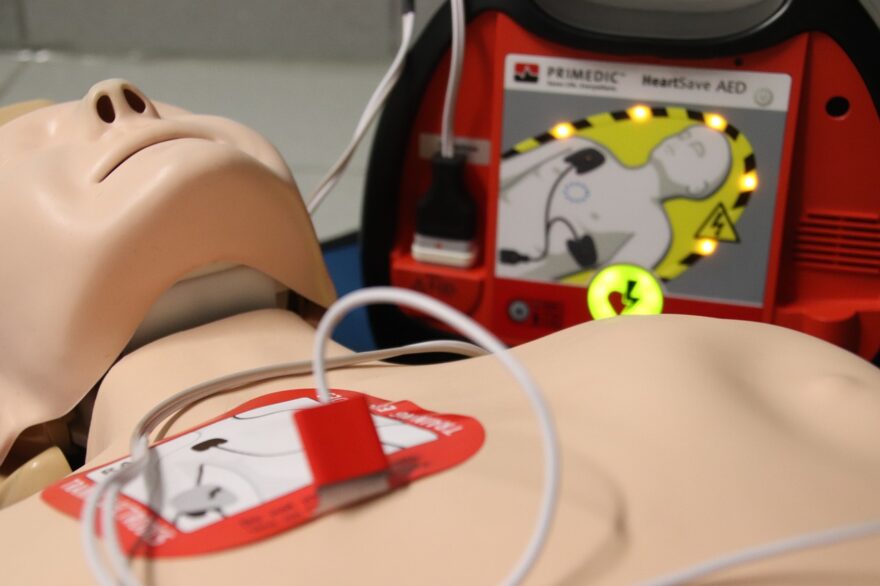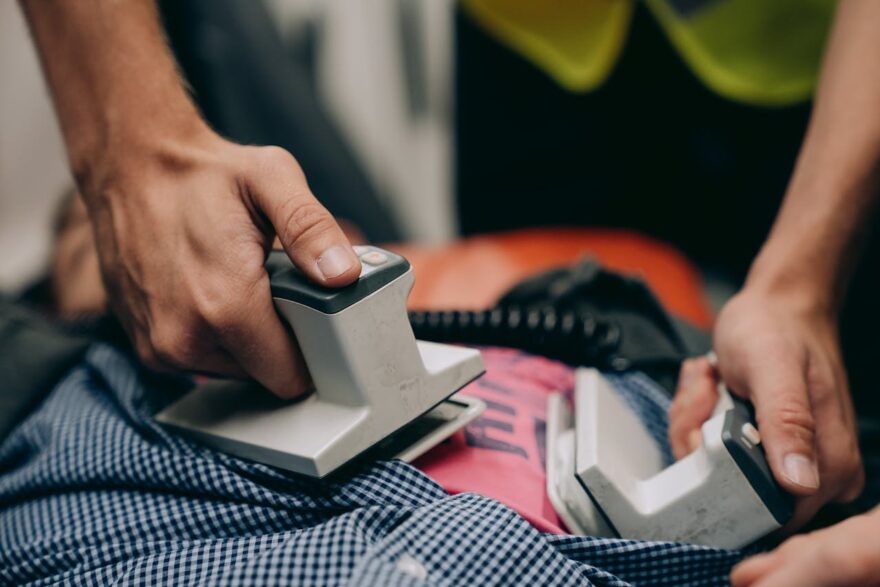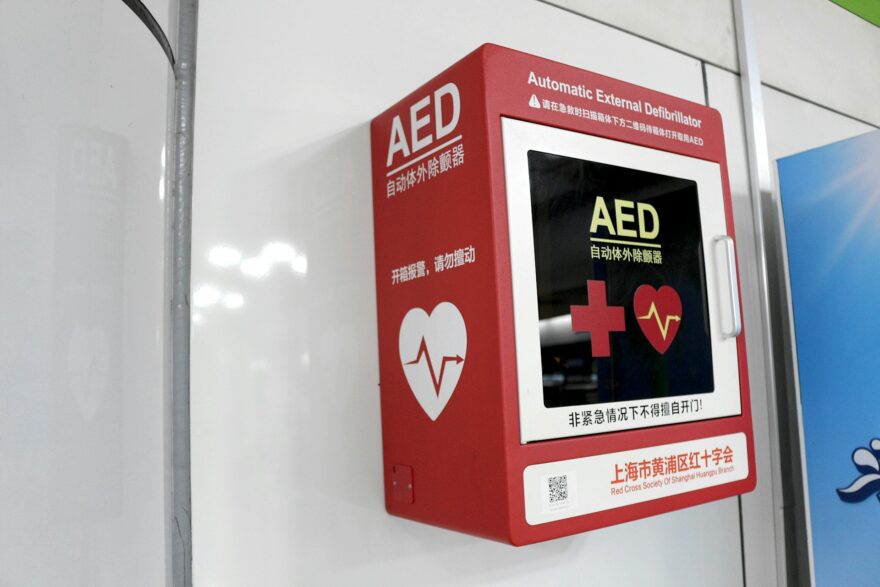Cardiac arrest and heart attacks are serious medical emergencies, but they’re not the same. Many people confuse the two, assuming they are different names for the same condition. However, understanding the difference is crucial for providing the right help in an emergency.
Cardiac arrest happens suddenly when the heart stops beating altogether, preventing blood from reaching the brain and other vital organs. This results in the person losing consciousness and can lead to death within minutes if not treated immediately. On the other hand, a heart attack occurs when blood flow to a portion of the heart is blocked, affecting only part of the heart’s muscle. While it is a severe condition, the heart does not usually stop beating entirely.
Knowing the symptoms and immediate actions to take can save lives. In this blog, we’ll explore what differentiates these two conditions, how to recognize their signs, and what steps you can take to help someone experiencing either. Understanding these key aspects prepares you to respond effectively in emergencies, potentially making a life-or-death difference.
Understanding Cardiac Arrest and Heart Attack
Cardiac arrest and heart attacks are different heart-related emergencies, each requiring specific knowledge and response. Understanding these conditions can make a big difference when it counts the most.
Cardiac arrest occurs when the heart unexpectedly stops beating. This happens due to a malfunction in the heart’s electrical system, which disrupts the pumping action, stopping blood flow to vital organs. When this occurs, the person loses consciousness almost immediately and will not breathe or breathe normally. If not treated within minutes, cardiac arrest often results in death.
In contrast, a heart attack, or myocardial infarction, happens when the blood supply to part of the heart muscle is reduced or blocked. This blockage is typically due to a buildup of fat, cholesterol, and other substances in the heart’s arteries. During a heart attack, the heart often continues to beat, albeit not as effectively, but the blocked blood flow can damage the heart muscle if not restored quickly.
To effectively manage these conditions, it’s important to remember:
– Cardiac Arrest: Total loss of heart function, sudden collapse, no pulse.
– Heart Attack: Blocked blood flow, pain or discomfort in the chest, possible ongoing consciousness.
Both emergencies require immediate medical attention, but they differ significantly in their onset and initial symptoms. Recognizing these differences helps in providing quicker, more accurate responses.
Key Differences Between Cardiac Arrest and Heart Attack
Although cardiac arrest and heart attack are heart-related emergencies, the way they occur and their effects on the body are distinct. Knowing these differences allows for quick identification and response during an emergency.
1. Cause:
– Cardiac Arrest: This is triggered by an electrical malfunction causing the heart to stop beating effectively.
– Heart Attack: It is caused by a blockage in one or more of the coronary arteries, interrupting blood flow to the heart muscle.
2. Symptoms Timeline:
– Cardiac Arrest: Symptoms are immediate, such as sudden collapse and no pulse.
– Heart Attack: Symptoms can appear gradually, including chest pain, shortness of breath, nausea, and other warning signs hours or days before.
3. Signs:
– Cardiac Arrest: No heartbeat, no breathing, unresponsiveness.
– Heart Attack: Sharp, squeezing chest pain, radiating pain to the arm, neck, or jaw, cold sweat.
4. Treatment Response:
– Cardiac Arrest: Requires immediate CPR and defibrillation with an AED to attempt restoration of normal heart rhythm.
– Heart Attack: Needs urgent medical evaluation and treatment to restore blood flow, such as medications, and possibly surgical procedures like stenting.
While both cardiac arrest and heart attacks are critical, their different signs and treatments necessitate understanding to ensure a proper emergency response that can ultimately save lives. Recognizing these differences sets a strong foundation for being prepared during cardiac emergencies.
Recognizing Symptoms and Warning Signs
Recognizing the symptoms and warning signs of cardiac arrest and heart attacks is crucial for timely intervention. Quick identification can prevent further damage and improve survival rates. Here’s how to differentiate the warning signs so you can act fast:
– Cardiac Arrest:
– Absence of Breathing: The person will suddenly stop breathing or breathe abnormally.
– No Pulse: There’s a sudden absence of heartbeat.
– Loss of Consciousness: The person collapses and becomes unresponsive.
– No Warning: Occurs without prior symptoms or warnings.
– Heart Attack:
– Chest Discomfort: Experiences pain or pressure that may spread to arms, neck, back, or jaw.
– Difficulty Breathing: Shortness of breath even without physical exertion.
– Other Signs: Cold sweats, nausea, lightheadedness, and fatigue.
– Gradual Onset: Symptoms may appear hours or even days before the attack.
These symptoms might vary in intensity and can present differently in women, who are more likely to experience non-traditional symptoms like nausea or dizziness. Knowing these signs helps you recognize an emergency and respond appropriately. Prompt action means faster access to medical attention, which is vital for both cardiac arrest and heart attacks.
Immediate Actions and First Aid Response
Immediate actions and first aid response are critical during cardiac emergencies. Acting fast can make the difference between life and death. Here’s a straightforward guide on what to do:
1. Call Emergency Services:
Dial 911 immediately for professional help for both cardiac arrest and heart attacks.
2. For Cardiac Arrest:
– Begin CPR: If the person has no pulse and is not breathing, start CPR right away. Push hard and fast in the center of the chest.
– Use an AED: If available, use an automated external defibrillator as soon as possible. Turn the machine on, follow its instructions, and continue CPR until emergency responders arrive.
3. For Heart Attack:
– Keep the Person Calm: Have them sit or lie down in a comfortable position.
– Administer Aspirin: If they’re conscious and not allergic, give them aspirin to chew on. This helps thin the blood and reduce heart damage.
– Monitor Condition: Stay with the person, ensuring their comfort and monitoring for any changes.
Knowing these steps prepares you to react decisively and effectively. Regular training in CPR and the use of AEDs can greatly enhance your confidence and ability to assist during these emergencies. Being prepared saves lives.
Conclusion
Understanding cardiac arrest and heart attacks equips us to respond effectively during emergencies. Clear knowledge of their differences, symptoms, and immediate actions forms the foundation of an effective response plan. While both are critical conditions, their unique signs and responses demand accurate identification and timely intervention.
Citywide CPR is committed to training you to handle such emergencies effectively. From CPR courses to AED program management, we provide the tools and knowledge needed to save lives. Connect with Citywide CPR to be a proactive part of your community’s safety. Our expert training ensures you’re prepared for any cardiac emergency, making every moment count.












